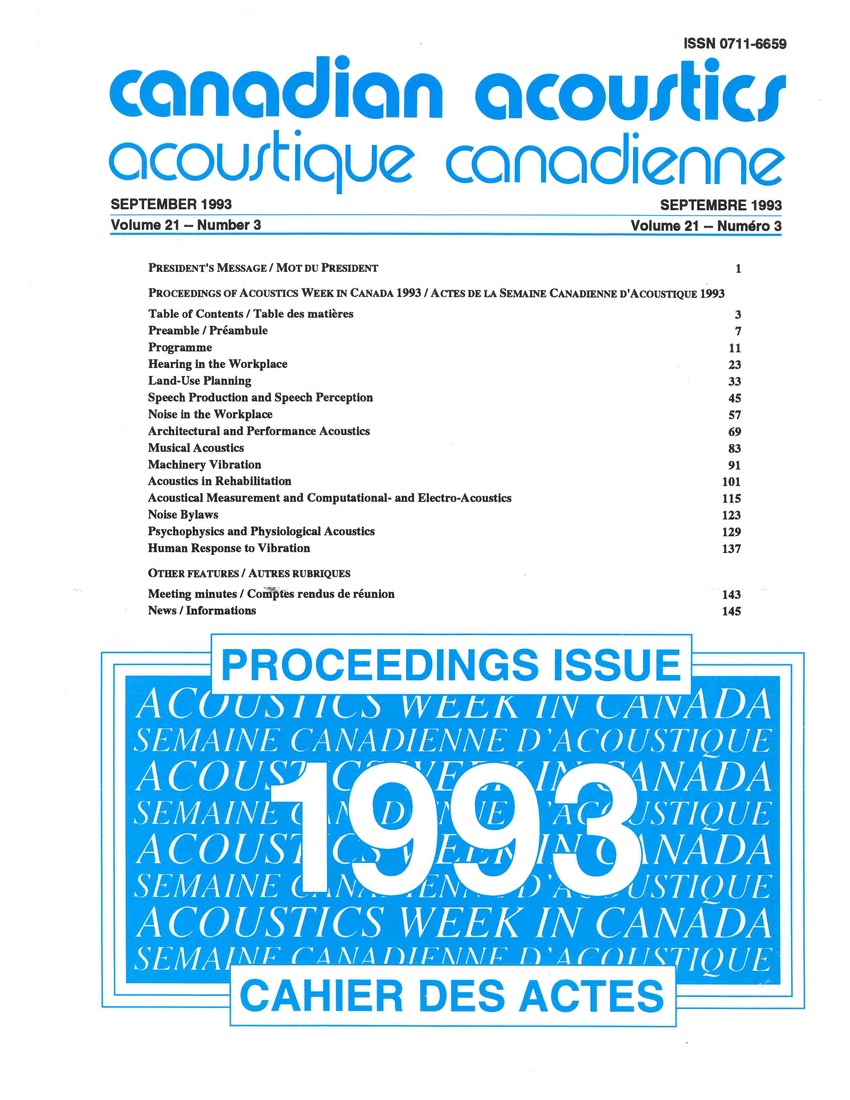Sound propagation of reverse alarms used on heavy vehicles
Keywords:
acoustic applications, acoustic wave propagation, aeroacoustics, alarm systems, safety, reverse alarms, heavy vehicles, acoustical characteristics, sound pressure level, 700 to 2800 HzAbstract
In Quebec, the regulation related to the use of reverse alarms on heavy vehicles referred to the SAE J994 Standard. Regarding acoustical characteristics, this standard states that the predominant sound frequency of the alarm should fall within the frequency range of 700-2800 Hz. The cycles of sound pulsations from the alarm shall be of the order of 1-2/sec. The duration of the `on' and `off' intervals shall be approximately equal in length. The alarm should be tested in free field, 4 feet above a horizontal reflecting plane or laboratory equivalent, with the microphone 4 feet from the alarm's horn along its 0 degree axis. The alarm in then classified according to its sound pressure level: Type A: 112 dBA, Type B: 107 dBA, Type C: 97 dBA, Type D: 87 dBA and Type E: 77 dBA. The accidents reported above raise the question as to what extent such a standard insures that every worker will perceive the alarm at any position behind the heavy vehicleAdditional Files
Published
How to Cite
Issue
Section
License
Author Licensing Addendum
This Licensing Addendum ("Addendum") is entered into between the undersigned Author(s) and Canadian Acoustics journal published by the Canadian Acoustical Association (hereinafter referred to as the "Publisher"). The Author(s) and the Publisher agree as follows:
-
Retained Rights: The Author(s) retain(s) the following rights:
- The right to reproduce, distribute, and publicly display the Work on the Author's personal website or the website of the Author's institution.
- The right to use the Work in the Author's teaching activities and presentations.
- The right to include the Work in a compilation for the Author's personal use, not for sale.
-
Grant of License: The Author(s) grant(s) to the Publisher a worldwide exclusive license to publish, reproduce, distribute, and display the Work in Canadian Acoustics and any other formats and media deemed appropriate by the Publisher.
-
Attribution: The Publisher agrees to include proper attribution to the Author(s) in all publications and reproductions of the Work.
-
No Conflict: This Addendum is intended to be in harmony with, and not in conflict with, the terms and conditions of the original agreement entered into between the Author(s) and the Publisher.
-
Copyright Clause: Copyright on articles is held by the Author(s). The corresponding Author has the right to grant on behalf of all Authors and does grant on behalf of all Authors, a worldwide exclusive license to the Publisher and its licensees in perpetuity, in all forms, formats, and media (whether known now or created in the future), including but not limited to the rights to publish, reproduce, distribute, display, store, translate, create adaptations, reprints, include within collections, and create summaries, extracts, and/or abstracts of the Contribution.


